FS S5860-48SC Internal Hardware Overview
Inside the switch, we have a layout that is different than many of the higher-end switches we review (e.g. the 32x100G or 32x400G) and that is likely how FS.com is able to keep this chassis a relatively short depth. We are going to start discussing this switch from the black heatsink in the top left of the photo below and work our way around the switch.
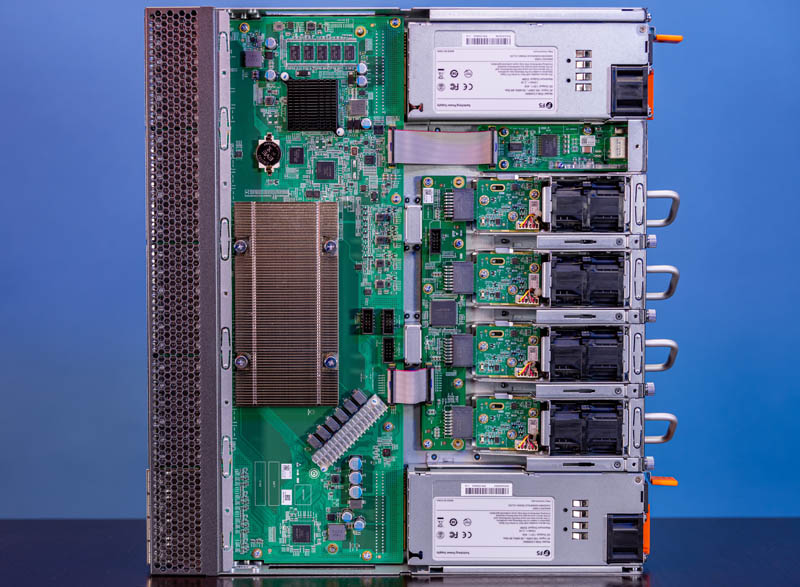
The management CPU on this system is an Arm Cortex A9 quad-core CPU running at 1.2GHz. The switch has 4GB of memory usable and 8GB of eMMC storage. For a 10GbE switch, this is about what we would expect. For those looking to run an open network operating system like SONiC, you would typically look to see an x86 CPU like an Atom C3000 or a Xeon D and ONIE support. Those switches are a different segment than this unit so we just wanted to make sure our readers are aware.
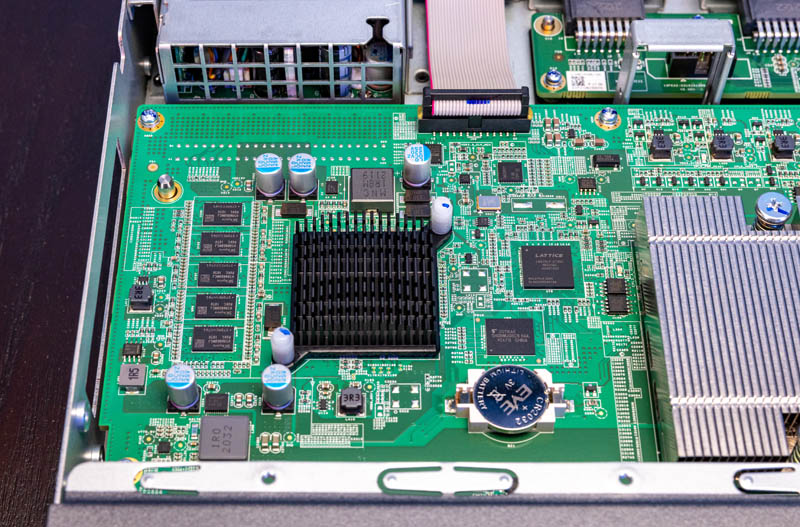
One other interesting item is that the management CPU is sitting directly next to the switch chip. On some switches, we review the management complex sits on a separate PCB along with replaceable memory modules and storage. This design is a lower-cost design while having many replaceable components makes switches more serviceable.
FS says that the switch chip is the Broadcom BCM56873 2Tbps Trident 3. That chip is sometimes called the Trident3-X5 and is the 2Tbps version of the Trident 3 line. That is actually interesting since this is the same chip we just saw in the Dell EMC S5248F-ON a 48x 25GbE + 8x 100GbE open networking switch. One of the interesting parts about the FS.com offering is that the underlying switch ASIC powers 48x 25GbE speed switches but is being used for only 48x 10GbE here.
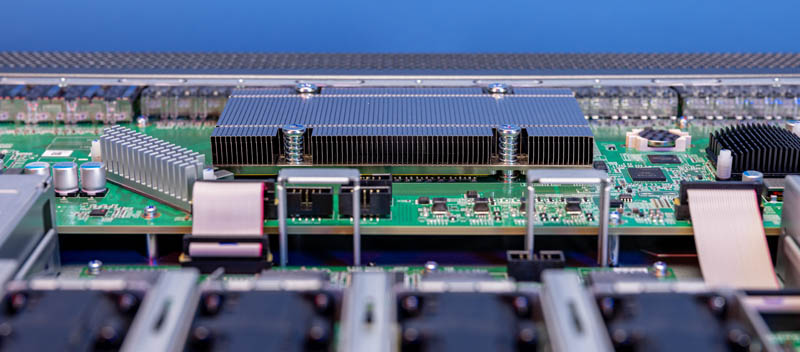
Here is Broadcom’s description of the Trident3-X5 and the 3.2T X7 as well. Some may wonder why FS did not use the X4. The X4 is only a 1.08T switch ASIC so it is 200Gbps short of what would be needed in this unit.
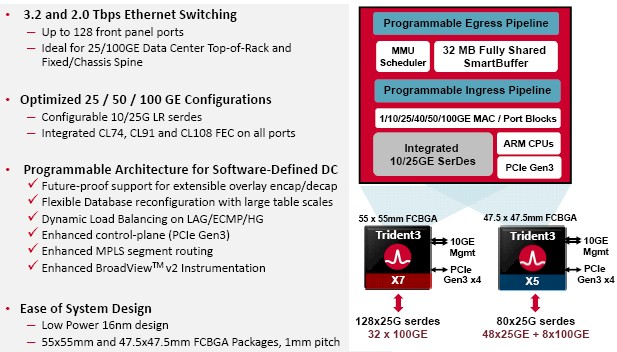
One fun note is that the heatsink for the switch ASIC has heat pipes to help keep the chip cool.
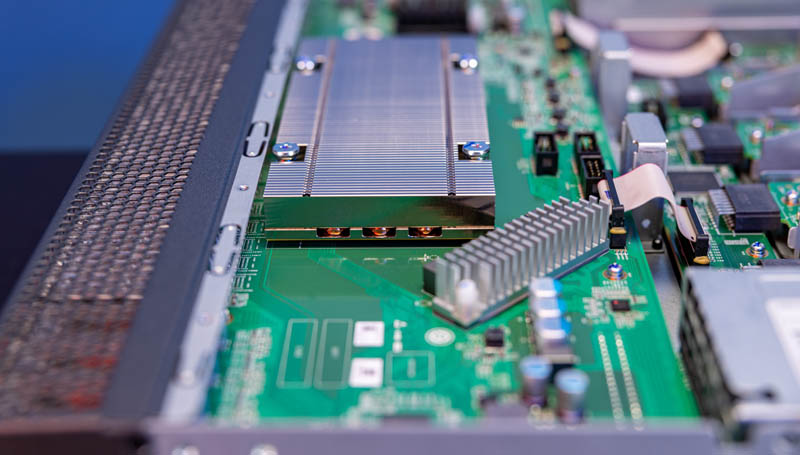
Next to the switch chip, and between the 100G ports and the power supply, there is relatively little on the board aside from a Lattice chip.

One slightly interesting feature is that there is a heatsink that is offset from front-to-back airflow. That heatsink is next to the ribbon cable that goes from the main switch and management PCB to the fan PCB.
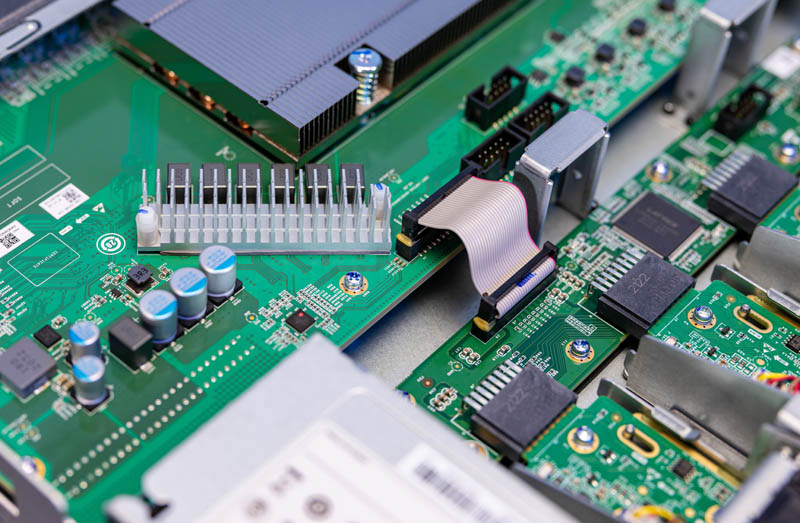
The four fans all connect to another Lattice-powered board via this ribbon cable. This small board sits in the middle of the chassis.

The fan control board is not the only one with a ribbon cable connection. There is also a long cable leading to the management ports in the back.
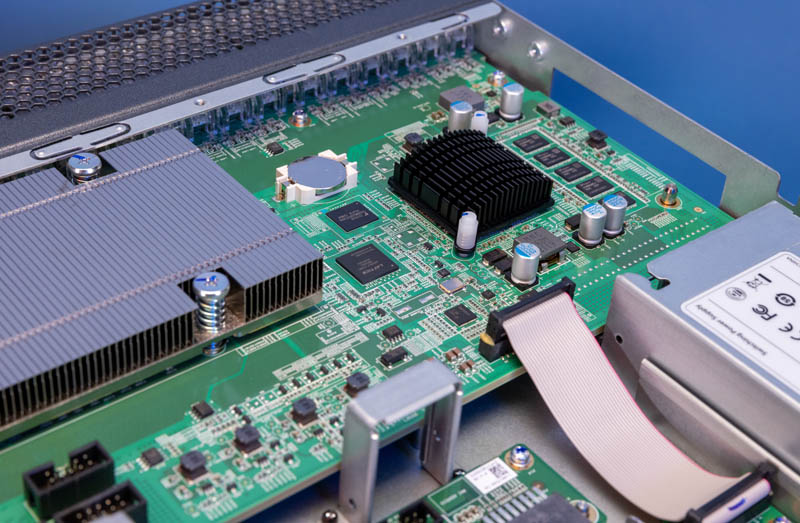
This is interesting since the cable is carrying power and the data signals for the USB port, serial console port, out-of-band management port, along with some status LEDs.

Overall, there is certainly a difference between this switch and others that we look at. Higher-end switches are designed to be more serviceable with more easily replaceable internal components. Lower-end switches tend to have less modularity than the S5860-48SC. This switch falls somewhere between the two extremes in terms of price and its build methodology.
Next, we are going to discuss the management where there is certainly something unique.




FS S5860=Ruijie Networks S6120
You’re totally right. You don’t see anything about these switches other than fake reviews and SEO websites saying they’re great. Do more of them STH. I always want to know if they’re good, but all these fake reviews and testimonials they do makes me think that they’re not.
Like there’s “N***a from Spain” on 12/26/2021, when people in Spain are off for Christmas holiday, and they say “The price of S5860-48SC is attractive compared to other brands. All the functions such as QoS, BGP, ACL, VRRP, etc. look good to me. Importantly, its 100G ports can play an important role in the data center.” Anyone that knows networking would call out MLAG being missing, VXLAN missing and so on so you know that’s fake.
As of now there’s 18 reviews and they all look fake.
Maybe that works in some places, but it doesn’t work in Europe or NA. It just turns me off. I also won’t buy Ubiquiti because they censor so much on forums. If FS reads this, stop spamming the Internet with fake reviews and people will trust you more.
I bought a 24 port S5850 a few months ago to get me going on a storage project in our data center. Our Dell S5248-ON switches were back ordered until at least March and possibly longer. While it took me a little while to learn the CLI commands (we mostly use Pro Curve), once I got everything working, it’s been fine. Having the flexibility to use our existing HP/Aruba or Dell optics and DACs has been quite nice.
Yes, there are some silly mis spellings in the web gui, but once I figured out the CLI commands I never have ventured back into the GUI anyways.
The reviews are definitively fake. I do not understand why they are doing this, as they products are actually decent as long as it fits your use case.
The issue with this one is power usage, 130W in idle, is a bit ridiculous.
Also lack of ONIE is a real problem long term I think